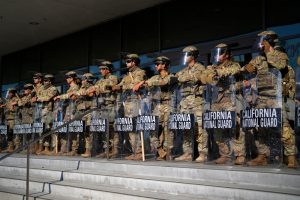
Iran’s Splintered Opposition Waits in Shadows for Collapse of Regime
By Chris Summers
Iran and Israel have been at war since June 13, when Israeli Prime Minister Benjamin Netanyahu launched Operation Rising Lion to destroy Iran’s nuclear capabilities.
On June 19, Israeli Defense Minister Israel Katz said Iranian leader Ali Khamenei “cannot be allowed to exist” after Iran fired a missile at a hospital in Be’er Sheva, Israel.
This is a breakdown of what we know about the Iranian regime, the succession to Khamenei, and the political opposition groups that hope to take over if it collapses completely.
Structure of Iran’s Regime
The Islamic Republic of Iran—to give the regime in Tehran its full title—was set up in 1979 after the collapse of the U.S.-backed monarchy under the last shah, Mohammad Reza Pahlavi.
It was initially led by Ayatollah Ruhollah Khomeini. After he died in 1989, another Shiite cleric, Ali Khamenei, took over the post of so-called “supreme leader” and remains in that role today.
In 2020, the Tehran Times, the regime’s English-language newspaper, said 60 percent of Iran’s population was younger than age 30, which means that the majority of Iranians have never known a time when Khamenei was not in charge of their country.
Iran holds presidential elections every four years, but all the candidates have to be approved by Khamenei, and their electoral programs do not challenge the basic tenets of the regime.
Battle for Succession if Khamenei Dies
President Ebrahim Raisi was thought to have been lined up by Khamenei as his successor, until he was killed in a helicopter crash in May 2024.
Khamenei, 86, appears to have gone into hiding, and his statement was read out on Iranian state television on June 18 by an anchor, over a still image of the leader.
If he is killed by an Israeli airstrike or some method of assassination, the regime will want to replace him quickly.
The next “supreme leader” will be chosen by the Assembly of Experts, whose members are selected by the Guardian Council, which was chosen by Khamenei.
The two most likely successors are Khamenei’s second son, Mojtaba, who is 55, and Ayatollah Sadiq Larijani, who is 62.
An outside chance has to be given to Hassan Khomeini, the 52-year-old grandson of Iran’s first “supreme leader.”
Could the Population Rise?
The death of Khamenei could trigger a popular uprising in Tehran and other cities.
When the shah left Iran on Jan. 16, 1979—ostensibly for a holiday as he battled cancer—it was the beginning of the end for his regime, which collapsed on Feb. 11, 1979.
But it may not take Khamenei’s death for such an insurrection to take place.
Either way, the revolution could take on a life of its own, and it may be that those leading it on the streets could be unwilling to cede power to opposition figures who are in exile.
The Iranian Opposition
The Shah’s Son
The shah of Iran died of cancer in Egypt in 1980, and his son, Prince Reza Pahlavi, became the heir to the Peacock Throne.
In April 2023, Pahlavi visited Israel and offered a message of “friendship from the Iranian people.”
But while Pahlavi—who lives in the United States—has his supporters among the Iranian diaspora, there is no evidence that the country’s population is clamoring for the return of the 64-year-old, let alone for him to take power.
While the House of Saud in neighboring Saudi Arabia has its roots in the 18th century, the Pahlavis only date their rule back to 1925, when a soldier, Reza Pahlavi, mounted a military coup, ousted the Qajar dynasty, and named himself shah.
The NCRI
The National Council of Resistance of Iran (NCRI) is a coalition that was founded in 1981.
Its biggest constituent part is the Mujahideen-e-Khalq (MEK), which was founded by three leftist students, Mohammad Hanifnejad, Said Mohsen, and Ali-Ashgar Badizadgan, who were all executed in 1972.
The MEK fell out with Khomeini and his regime in the early 1980s, and most of its members went into exile in Iraq, which was fighting a war with Iran at the time.
The leader of the National Council of Resistance of Iran, Maryam Rajavi (C), stands with members of the European Parliament at the European Parliament in Strasbourg, France, on June 18, 2025. Courtesy of NCRI
In 1988, thousands of MEK members were allegedly executed by the regime.
In 2003, the NCRI’s founder, Massoud Rajavi, vanished, and his 71-year-old wife, Maryam Rajavi, has led the movement ever since, gaining the support of many Western leaders, including former U.S. Secretary of State Mike Pompeo.
Ethnic Groups
Iran—which was known as Persia until 1935—contains large ethnic minority groups.
According to the Minority Rights Group, a UK-based nonprofit, about 60 percent of Iran’s population is ethnic Persian.
About 16 percent (14 million people) are Azeris, mainly living in the northwestern provinces. That means that there are more Azeris in Iran than in Azerbaijan, which has a population of about 10 million.
Another significant ethnic minority is the Kurds, who make up 10 percent of the population and live in the west, close to their brothers and sisters in Iraq, Syria, and Turkey.
Baluch people, in the southeast, make up about 2 percent, as do ethnic Arabs who live mainly in Khuzestan, close to the border with southern Iraq. The Lur people account for about 6 percent of Iran’s population.
Potential for Anarchy
Many of those opposed to U.S. intervention in Iran, such as Tucker Carlson, have referred to the vacuum and anarchy left behind in Iraq after its leader, Saddam Hussein, was deposed by a U.S.-led coalition in 2003.
After Saddam was overthrown, the Kurds revolted in northern Iraq, Iran-backed Shiite militias threatened to take over in Baghdad and southern Iraq, and Islamist terrorist groups such as al-Qaeda drew support from the Sunni Muslim population.
Al-Qaeda attacked U.S. troops and their allies in central Iraq, most notably in the Battle of Fallujah.
In total, 4,419 U.S. troops were killed during Operation Iraqi Freedom, which ended in December 2011.
Then, in 2014, the ISIS terrorist group appeared and rapidly took over large parts of northern and central Iraq—and neighboring Syria—and killed 40 U.S. soldiers at Camp Saqlawiyah.
Carlson, Steve Bannon, Rep. Marjorie Taylor Greene (R-Ga.), and some other Trump supporters have argued that direct intervention in Iran would be a betrayal of Trump’s 2024 campaign promises and the principles of the “America First” movement.
In a post on social media platform X on June 17, Greene wrote that Carlson “unapologetically believes the same things” that she does.
“Foreign wars/intervention/regime change put America last, kill innocent people, are making us broke, and will ultimately lead to our destruction,” she wrote.


